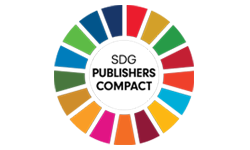Drug products not only contain “actives” that confer the intended therapeutic benefits such as pain relief or act on particular part of the body, but contain other materials that are also “functional” with respect to the drug product. These are known as excipients and specific functionality which they confer to a particular product is independent
upon the process used to add the excipient to the formulation and its exact location within the final dosage form. Introduction of novel drug delivery systems and new drug
moieties lead to the need for new excipients with varied characteristics. Development of new excipient entities and their evaluation is a costly procedure; modification
of existing excipients is very easy, more economical and less time consuming. The development of excipients that are capable of fulfilling multifunctional roles such as
enhancing drug bioavailability and drug stability as well as controlling the release of the drug according to the therapeutic needs is one of the most important prerequisites
for further progress in the design of novel drug delivery systems. The main focus
of this article is on synthetic novel excipients that perform multiple functions in
pharmaceutical formulations.
Abbas, K.A. (2010). “Modified Starches and Their Usages in Selected Food Products: A review Study”, J Agri Sci, Vol. 2(2), pp.90-100.
Bansal, A.K.and Nachaegari, S.K. (2004) “Coprocessed excipient for solid dosage form”. Pharmaceutical Technology, pp. 52-64.
Bharate, S.S. (2010) “Interactions and incompatibilities of pharmaceutical excipients with active pharmaceutical ingredients: a comprehensive review”, Journal of Excipients and Food Chemicals, Vol 1(3), pp.3-26.
Blecher, L. (1993) “Pharmaceutical Excipients: Producers and Users strengthen their Voice”, Pharmaceutical Technology, Vol 17(2), pp. 38–39.
Brewster, M.E. and Loftsson, T. (2007) “Cyclodextrins as Pharmaceutical Solubilizers”, Advanced Drug Delivery Reviews, Vol 59, pp. 645–666. http://dx.doi.org/10.1016/j.addr.2007.05.012
Buckton, G. (2008) “Excipients and Delivery systems for Pharmaceutical Formulation”, Royal Society of Chemistry, Vol 34(4), pp. 373-383.
Chakraborty, S., Shukla, D., Vuddanda, P.R., Mishra, B. and Singh, S. (2010) “Utilization of adsorption technique in the development of oral delivery system of lipid based nanoparticles”, Colloids and Surfaces B: Biointerfaces, Vol 81, pp. 563-69. http://dx.doi.org/10.1016/j.colsurfb.2010.07.058
Chang, E.I. (2011) “Vascular Anastomosis using controlled phase transition in polaxamer gels”, Nature Medicine, Vol 17, pp. 1147-1152. http://dx.doi.org/10.1038/nm.2424
Chaudhary, P.D., Pathak, A.A. and Desai, U. (2012) “A Review: Co processed Excipients-An Alternative to Novel Chemical entities”, International Journal of Pharmaceutical and Chemical Sciences, Vol 1(4), pp.1480-1498.
Chaudhary, S.A., Chaudharya, A.B. and Mehta T.A. (2010) “Excipients Updates for Orally Disintegrating Dosage Forms”, International Journal of Research in Pharmaceutical Sciences, Vol 1(2), pp.103-107.
Chougule, A.S., Dikpati, A. and Trimbake T. (2012) “Formulation development of coprocessed excipients”, Journal of Advanced Pharmaceutical Sciences, Vol 2(2), pp.231-249.
David, S., Pitard, B., Benoita, J.P. and Passirania, C. (2010) “Non-viral Nanosystems for Systemic sIRNA Delivery”, Pharmacological Research, Vol 62, pp. 100–114. http://dx.doi.org/10.1016/j.phrs.2009.11.013
El-Barghouthi, M., Eftaiha, A., Rashid, I., Al-Remawi, M. and Badwan, A. (2008) “A novel super disintegrating agent made from physically modified chitosan with silicon dioxide”, Drug Development and Industrial Pharmacy, Vol 34(4), pp. 373-83. http://dx.doi.org/10.1080/03639040701657792
Ender, K., Cabelka, T., Jacob, K., Denomme, D. and Wallick, D. (2007) “A New Hypromellose Excipient for Direct Compression Controlled Release Applications”, American Association of Pharmaceutical Scientists Annual Meeting Abstract # 002440.
Flores, L.E., Arellano, R.L. and Esquivel, J.J.D. (2000) “Study of load capacity of Avicel PH200 and cellactose, two direct-compression excipients using experimental design”, Drug Development and Industrial Pharmacy, Vol 26(4), pp. 465-469. http://dx.doi.org/10.1081/DDC-100101256
Gohel, M.C. (2005) “A review of directly compressible excipients”, Journal of Pharmaceutical Sciences, Vol 8(1), pp.76-93.


